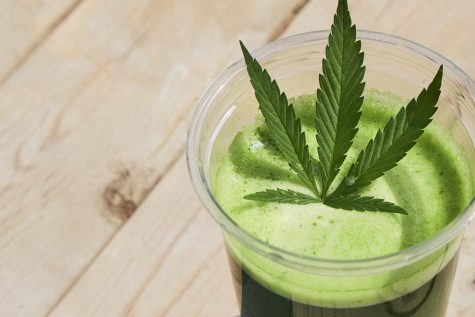Study suggests THC-potent cannabis offers better symptomatic relief than CBD-rich strains
Cannabis may be laden with hundreds of active components, but two in particular are discussed more frequently than others — THC (tetrahydrocannabinol) and CBD (cannabidiol). Contrary to popular misconception, the stereotypical “stoner’s favorite” that is THC may harbor more medical potential than skeptics initially thought.
Researchers at the University of New Mexico recently published a study into the efficacy of using tetrahydrocannabinol (THC) for symptomatic relief from nausea. The findings suggest that the psychoactive compound is a powerful and natural tool for easing nausea.
Although sweeping medical cannabis access across the U.S enables many patients to obtain low-THC products, the general rule of thumb from regulators and doctors is for patients to steer clear of the psychoactive cannabinoid due to its mind altering effects. However, new research indicates that THC may offer more than just a way to get “high”.
THC’s cousin cannabinoid CBD (cannabidiol) has gained global recognition for its therapeutic effects. Plus, since CBD is non-psychoactive, the appeal is much greater for those who do not want to plummet into a realm of sedation. However, according to UNM researchers, THC could also be worth adding to one’s daily routine for enhanced health and wellness.
“Largest study of its kind” delivers fascinating insight into the benefits of THC for symptomatic relief from nausea
Described as “the largest study of its kind,” this investigation into THC’s symptom-relieving effects was made possible through the use of a tracking app. Releaf, a patent-pending app, is designed to store information pertaining to the habits of cannabis consumers, such as their product choice, symptoms and level of relief.
The UNM researchers found that cannabis consumers who use the drug to ease specific symptoms found relief within five minutes. However, they also discovered that, in comparison with edibles and vaporizers, cannabis flowers provided the greatest level of relief.
An April study that was published in the Journal of Clinical Gastroenterology also confirmed that THC can provide more symptomatic relief than high-CBD products; thus mirroring the UNM study’s findings.
“Perhaps our most surprising result was that THC, typically associated with recreational use, seemed to improve treatment among consumers of Cannabis flower, while our CBD, more commonly associated with medical use, actually seemed to be associated with less symptom relief,” said the UNM’s associate professor of psychology and study co-author.
Thousands of self-administration cannabis sessions analyzed in UNM study on THC for symptomatic relief from nausea
To gather enough evidence that THC can play a role in reducing the symptoms of various medical conditions, the team of New Mexican researchers analyzed a total of 2,220 “cannabis self-administration sessions” from 886 consumers who required relief treatment.
Data was gathered from June 6, 2016, to July 8, 2019. Users input real-time information regarding the products they chose to consume, as well as the type and severity of their symptom(s).
The UNM researchers discovered that hybrid and sativa flower products seriously “outperformed” indica products.
“In sessions using flower, higher tetrahydrocannabinol and lower cannabidiol were generally associated with greater symptom relief (eg, within 5 min),” wrote the study authors.
Although the news is positive, lead study author and assistant professor of economics at UNM, Dr. Sarah Stith, stressed the long-term effects of THC and advised “high-risk populations,” such as pregnant women and children, to practice caution when using the plant.







